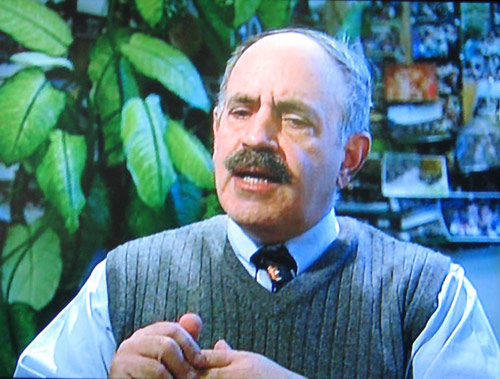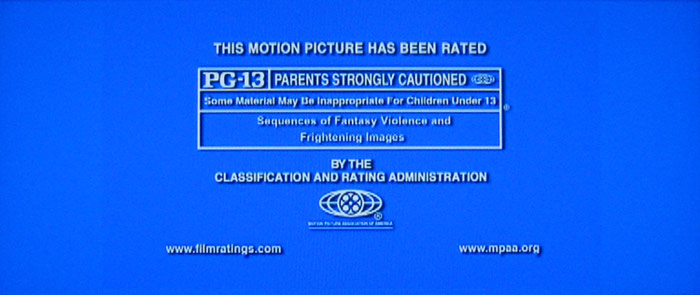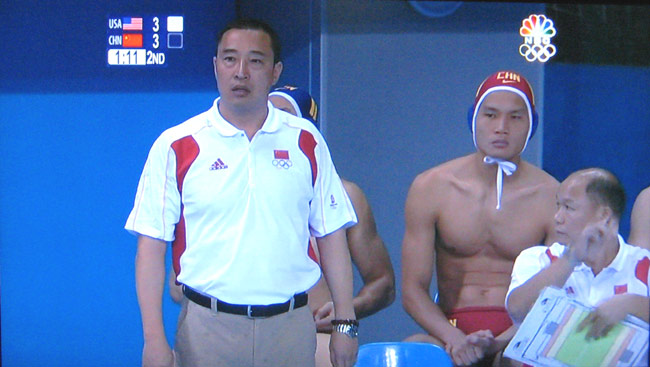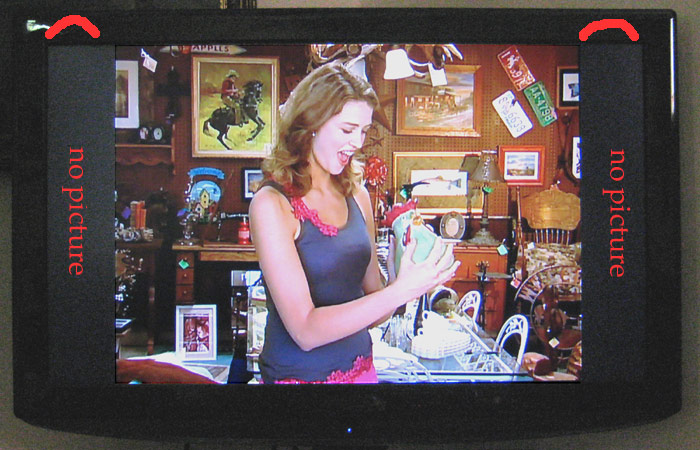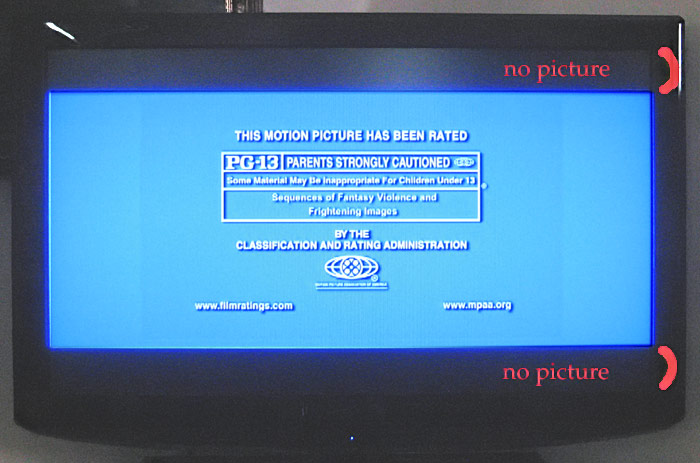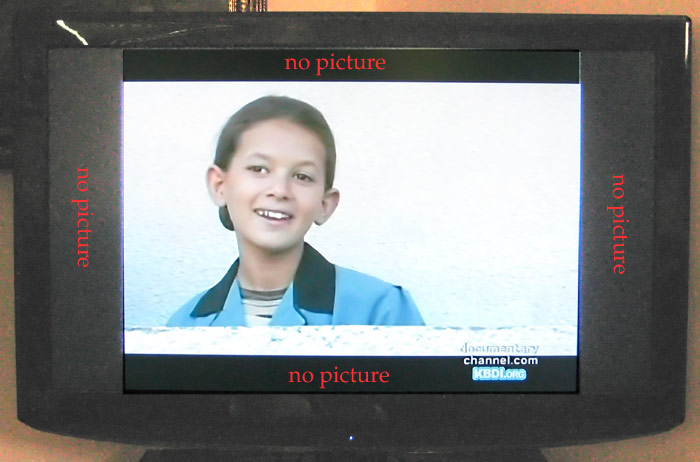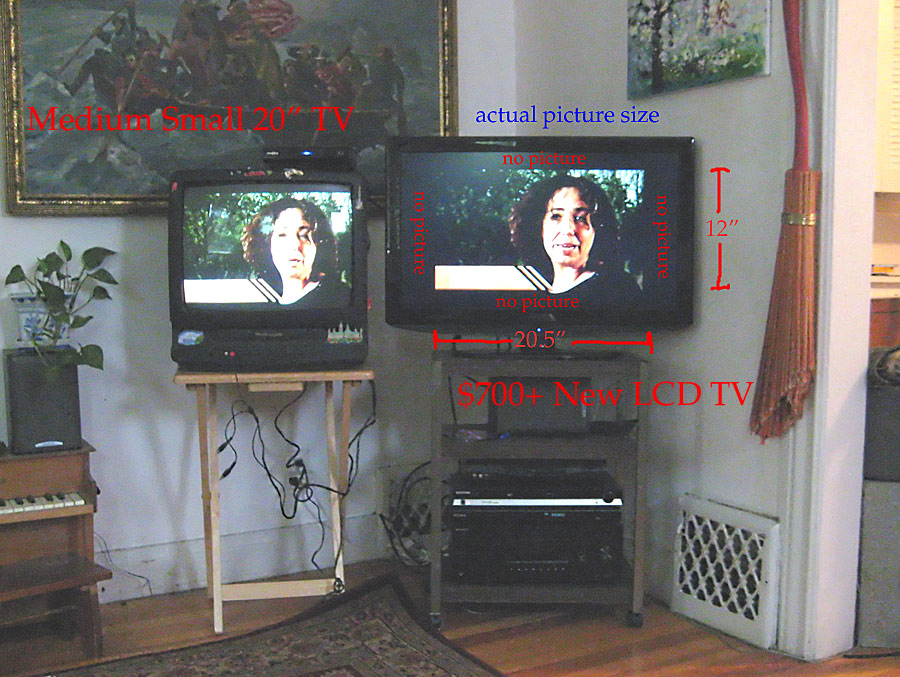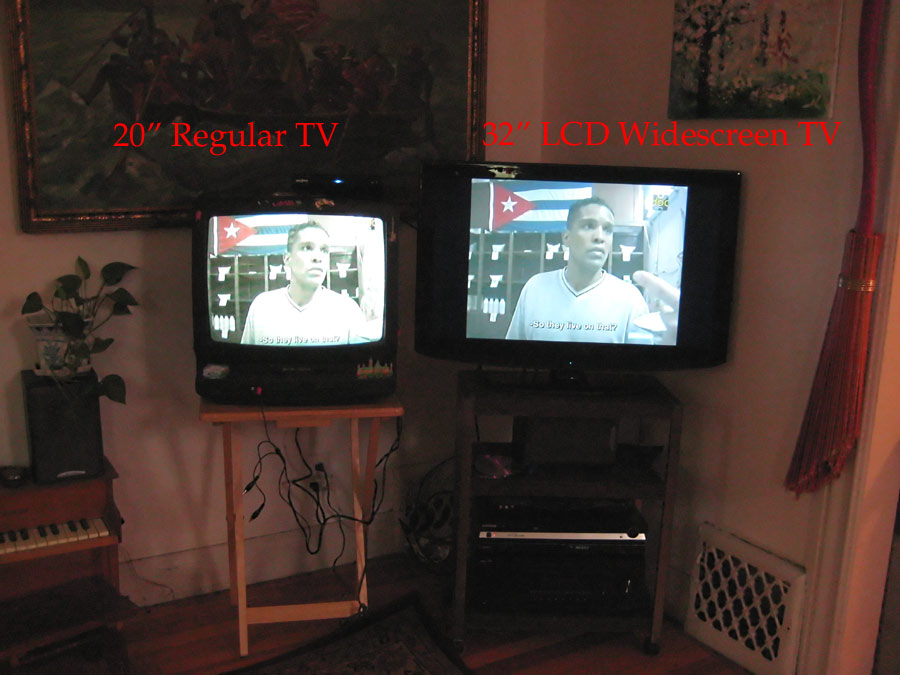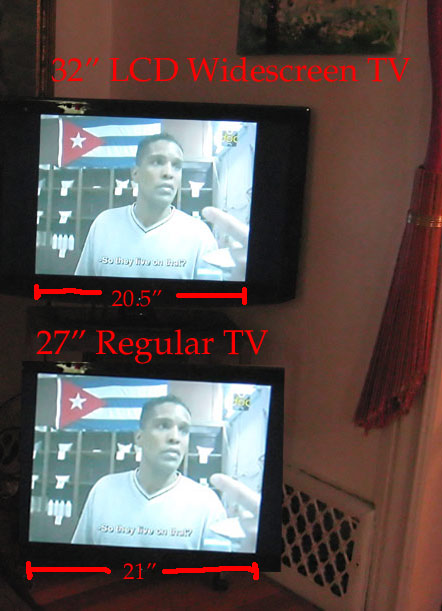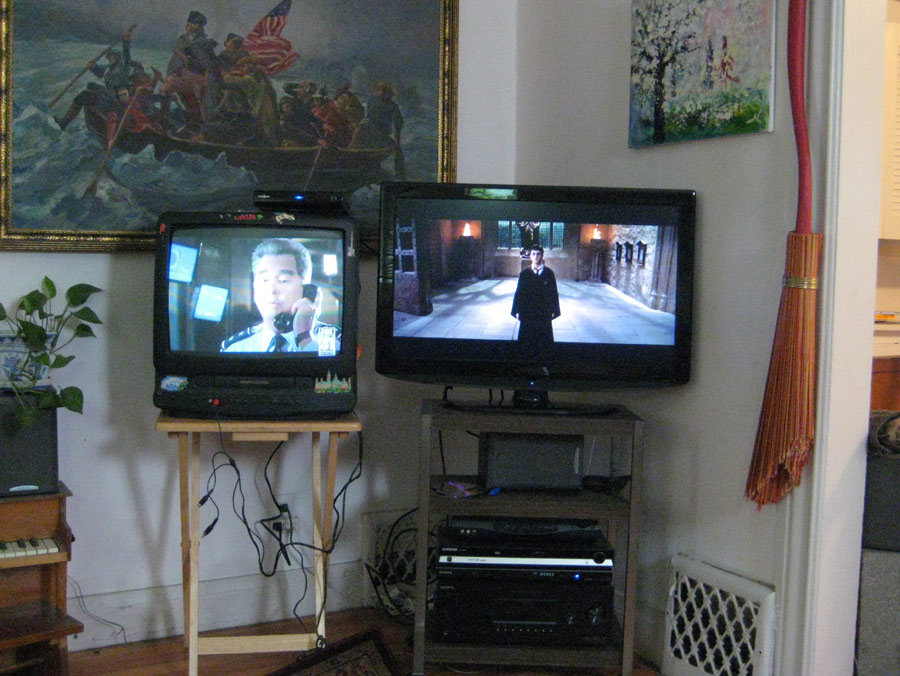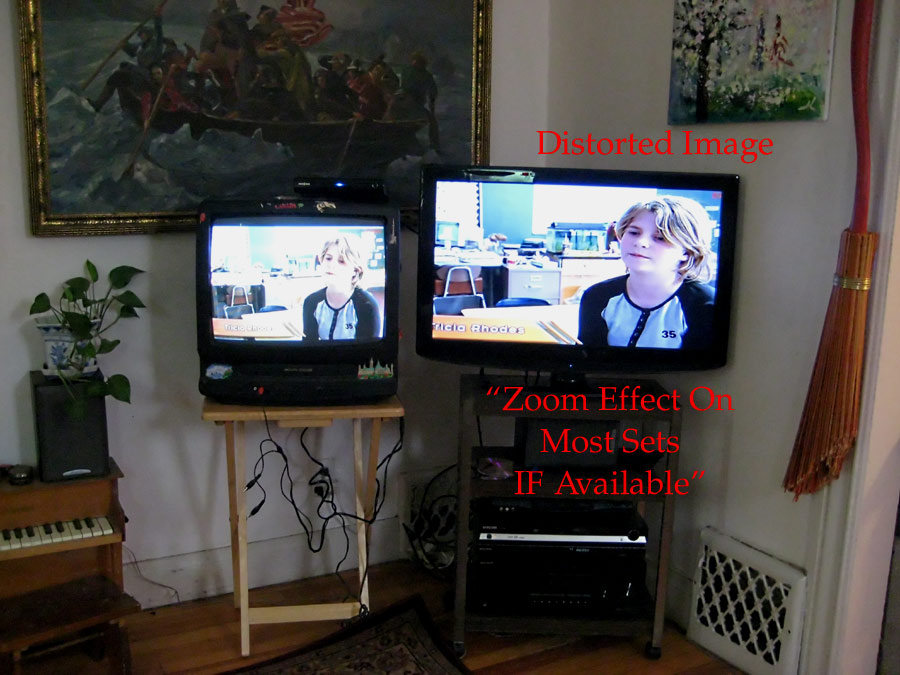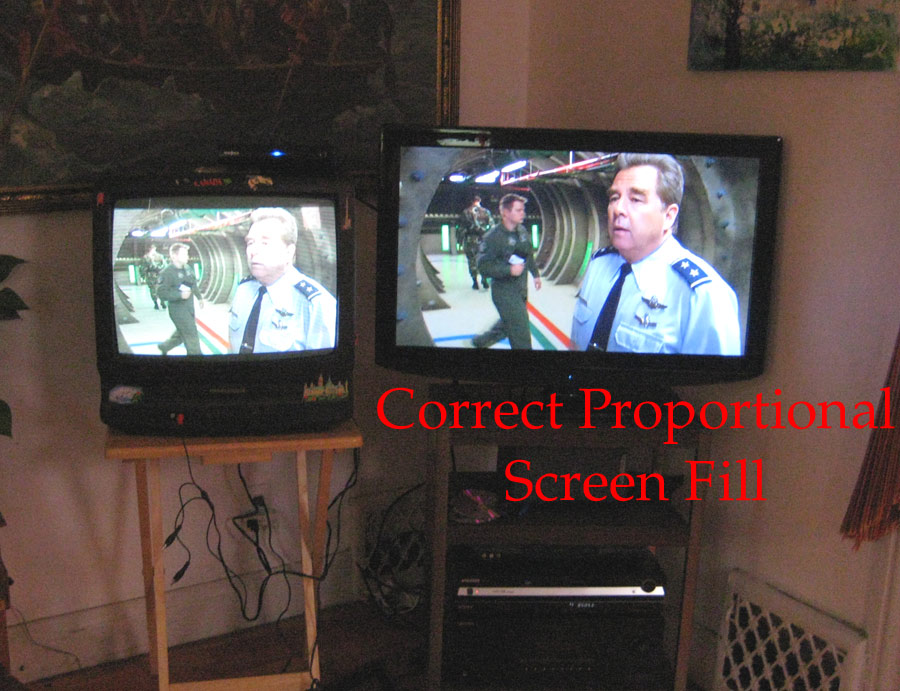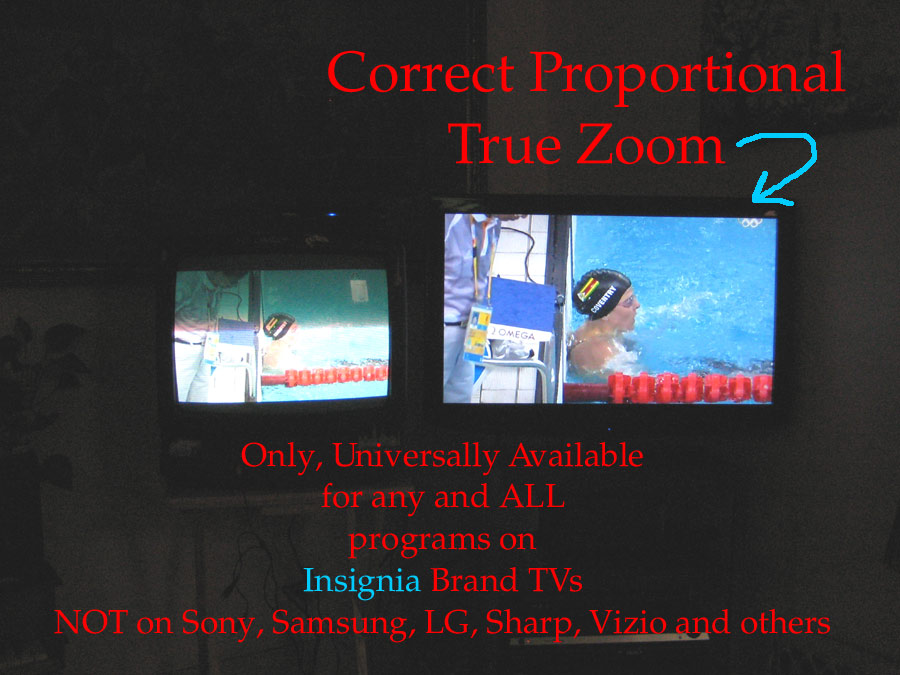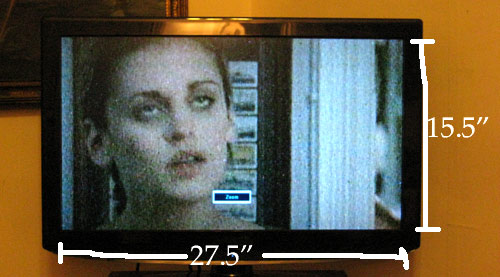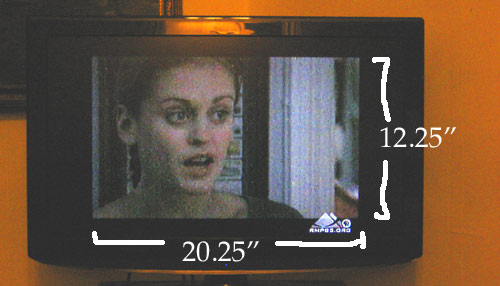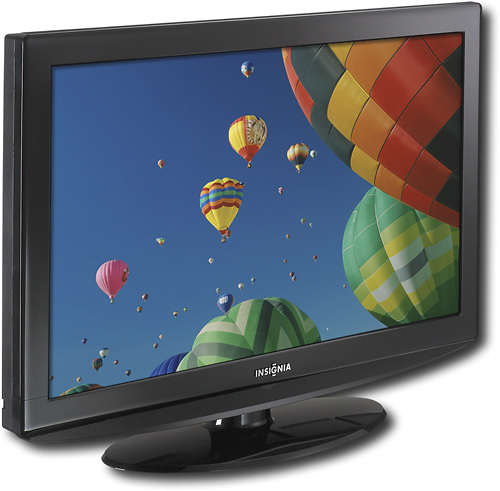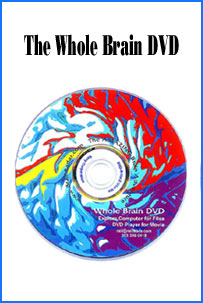|
This page Sponsored by You are visitor
BACKGROUND and BASIS for Testing and Review "Neil was responsible for enticing me into the motion picture and video production field. Without Neil's influence I wouldn't have gone into professional production. He is a passionate and honest person who combines intellect, technical acuity and passion."
I am an independent film maker, and I make my entire living selling my films online and on DVD. My sites get about 50,000 visitors each month (see links above). I have been a photographer, film maker, and videographer most of my 54 years, beginning as a teenager. I am also a amateur painter, and I have a keen and developed eye, and often see things in films and other visual media that many people miss. This year I made the transition from 4:3 aspect ration CRT ( standard shaped TV nearly sqaure tube) display TVs and monitors to the new flat screen 16:9 LCD widescreen televisions, primarily for viewing broadcast TV and DVDs. For several years I have been using a high resolution Sony LCD screen for computer monitoring and film editing, and will continue to do so. However, due to the universally lowered price and reasonably excellent quality of LCD widescreen sets, I also decided to make the transition to LCD TV for my TV and DVD viewing.
What I discovered about all but one brand of LCD TV set was an absolute jaw dropping surprise, and this page is made to share this information with what will be millions of people who will go out shopping for a new LCD TV, and likely drop from $250 up to potentially $1000, $2000 or more for a new set. I can only recommend ONE BRAND of set, given all of my tests. I did not test EVERY brand out there, but rather tested the following manufacturers, as these sets presented the best displays in store at the lowest to mid-range of prices: Sony, Samsung, Sharp, Vizio, LG, and Insignia My tests did not indicate that price influenced the single deciding factor for me as which set was heads above all others, nor that there were any other sets that I did not test that would meet this criteria.
Please bear in mind that I am completely independent from all TV set manufacturers and retailers, and there is absolutely no incentive for me to make any recommendations. I provide this web page for public benefit only.
THE SHOCKING TRUTH ABOUT ASPECT RATIO DISPLAY At this point in time there are a number of ways in which TV and movies (DVDs) format their picture SHAPE. This is known as ASPECT RATIO. There is no one standard for the shape of screen sizes, but only general practices can be observed. For most of TV history, television was broadcast using a 4:3 aspect ratio which looks like this:
4:3 Aspect Ratio
The picture is nearly square, but slightly wider than tall, i.e. 4 parts wide to 3 parts tall, hence an aspect ratio of 4:3 (For example 12 inches wide by 9 inches tall). For over 50 YEARS all TV was filmed and broadcast in this 4:3 shape. The history of film before Cinemascope and other widescreen theater formats also used this shape of picture. So, if you watch TV programs and films from THE PAST CENTURY, chances are a very high percentage of your programming will be in the 4:3 aspect ratio. Keep this in mind.
Decades ago, film makers began changing the shape of the film frames they were using, and when you went to see a movie at the theater, other shapes began to predominate theatrical films. This shape of theatrical films was much wider than tall. Eventually it reached a shape more or less as shown below, although many variations have existed., Below is shown a typical major motion picture movie theater aspect ratio, 2.39:1, more than twice as wide as it is tall: 2.39:1 Aspect Ratio
Other shapes can be found in the history of film, and if you use DVDs or watch TV you will encounter at some point all of these various aspect ratios while watching films on TV and DVD. You can read A HISTORY OF ASPECT RATIOS HERE and see examples of all.
In the past few years there has been a deliberate shift away from 4:3 TVs and towards 16:9 TVs, for a variety of reasons, and today it is nearly impossible to buy a new set that is not the 16:9 aspect ratio, which is a compromise between the predominant 4:3 broadcast TV shape and the very wide theatrical shape:
16:9 Aspect Ratio - All New LCD TVs
This adopted 16:9 shape by all TV manufactures allows the ability to fit a standard 4:3 program on the screen without wasting too much space, and also allows one to view a good portion of a theatrical program with only cutting off visual areas on the sides of the screen.
4:3 Program On Widescreen 16:9 Screen
Please note the "wasted" space on each side of the actual picture above when the 4:3 picuture is not zoomed or cropped on the widescreen TV.
In order to view a theatrical shaped picture on a 16:9 widescreen TV, the picture must either be cropped on the side to fit, or reduced so that it fits in the screen sides, in which case there will be "wasted" unused screen space now on the top and bottom:
Cinemascope Theatrical Program On Widescreen 16:9 Screen
Beyond this, TV stations and DVDs frequently use a LETTERBOX format, which is when you have a 4:3 picture that has black bars across the top and bottom to SIMULATE a widescreen or theatrical aspect ratio, as shown below:
LETTERBOXED 4:3 PICTURE on a Widscreen TV
So, in the end, what does this mean for the new owner of a Widescreen TV? It means that you will likely be getting a regular variation of picture shapes on your TV, both from broadcast and/or cable, as well as a regular variation of picture shapes on DVDs- Because there is no universally accepted aspect ratio shape over a history of 100 years of film and TV. The 16:9 format of nearly all LCD TVs is just a compromise.
Now this certainly wouldn't be a problem if you view your TV from 3 or 4 feet away so that picture size is not an issue- a viewing distance of a few feet for a letterboxed program would still look plenty big. But most people, most of the time watch their TV from at least 6 feet away or more. So how does a theatrical picture or a letterboxed picture, or even a regular 4:3 TV picture look on a "giant" 32" set from the couch across the room look??
We have a free 20" set sitting next to a Widescreen TV set- The 20" set would be considered a relatively small screen for a living room- keep this in mind. Next to it is a $700 new LCD TV. Both are showing the very common 4:3 Letterboxed program, often seen in broadcast TV and on many DVDs. Imagine, you've just spent $700 or more on a brand new "HUGE" 32" Widescreen TV, you get it home, turn it on, and suddenly you find that you are watching regular 4:3 programs and Letterbox programs, and this is what you see from your couch:
LETTERBOXED PROGRAM
Regular 4:3 TV Program
Gee whiz. It's not much bigger than a plain old 20" set. And when you are sitting across the room on a couch-- man, that sure isn't a BIG picture. !! In fact, a regular 27" TV will show the same 4:3 program BIGGER than the EXACT SAME 4:3 program on a 32" Widescreen TV:
Surprise Surprise Surprise.
Okay, how about "WIDESCREEN" movies on DVD.
Surprise again. Often, again depending on the TV set and DVD player-- you may be STUCK watching the program in the theatrical aspect ratio--- LOOK what THIS looks like from across the room on a 32" set- This gives a whole new meaning to "widescreen"-- and might be better called "nearsighted screen"
Theatrical Ratio Program On a Widescreen TV (right)
It comes nowhere near "huge". You are using a FRACTION of the widescreen TV real estate-- AND THERE IS NOTHING YOU CAN DO ABOUT IT. WAIT! You think--- I'll just "ZOOM IN" and make the picture "bigger". Let's hope so, because even on a big 32" set, when seen from 6 feet away or more, that 4:3 or Letterboxed picture is not much bigger than on a regular 20" TV set you have to squint to see from the couch. If you can't properly and proportionally zoom in while watching a 4:3 or Letterboxed program-- you have a stinking little picture to focus in on, and you just paid a bundle for your "new improved" LCD "Widescreen" TV. Surprise Again. You CAN'T do this reliably and universally except on ONE BRAND ONLY. !&@&^#!&@^!*@^!!!!
This is not just me being a total nerd about the size of the picture. I had friends over, and when I showed my friends the puny picture I was getting with some TV stations and DVDs on all but one of the 32" LCD sets, they all said the same thing:
"THAT'S TOTALLY RIDICULOUS!!"
Then I showed them the one set that would allow me to ZOOM IN without DISTORTION to fill the screen irregardless of the TV station, or the DVD material and the initial aspect ratio... and they all said the same thing...
"THAT'S WAY BETTER!!!"
This is a BIG DEAL.
THE NEED FOR UNIVERSAL PROPORTIONAL ZOOM !!
I tested the following brands of new LCD 32" and 19" Widescreen TV sets. In all but one of the 32" set brands you were STUCK with either the small sized picture, or you could only zoom in by stretching and DISTORTING the image. SOMETIMES--- but ONLY SOMETIMES-- and MORE OFTEN NOT--and MANY MANY TIMES YOU CAN NOT ZOOM IN AT ALL. Zooming in and keeping the natural proportions of the picture correct depends on 1) The broadcast signal 2) The DVD encoding 3) The brand of TV and it's control options.
Zooming in on 4:3, Letterboxed, and Theatrical Widescreen programs IS NOT A UNIVERSAL CONTROL THAT WILL WORK ON ALL TV'S, MUCH LESS ON ALL PROGRAMS.
And, in case you missed it--- there is a 100 year history of film and television that is done using aspect ratios OTHER than 16:9. If you can't zoom in and keep the proportions of the picture natural-- congratulations.
You have been screwed by TV set manufacturers than really don't give a damn about the MAJORITY of films and TV programs that are NOT in the 16:9 aspect ratio.
If you can zoom in at all on a 4:3 or Letterboxed program, you will DISTORT and STRETCH the image to fill the screen- in which case, your picture now looks like everyone is being squashed:
Here's what you will get IN VERY MANY INSTANCES IF you can zoom in at all, primarily with traditional 4:3 and Letterboxed programs-
NON-PROPORTIONAL ZOOM of a 4:3 Program
I don't know about you-- but for me THIS TOTALLY SUCKS. I am NOT an inhabitant of JUPITER and when I see people and objects, I do not care to see them as if they are under the effects of quadruple gravity.
I believe that when you buy a new widescreen LCD TV, you should be able to FILL all available screen real estate with a picture, the same as you would in cropping a still photograph to fill a given frame size- WITHOUT distorting the image. It seemed to be a FLUKE that the FIRST TV I tested, and as it turned out the LEAST EXPENSIVE SET ONLY had this ability. Given that when you are buying a WIDESCREEN TV, you are losing VERTICAL picture area for starters- so if you don't have the ability to zoom in retaining natural proportions-- you are getting a much smaller picture than you would be viewing the same picture even on a SMALLER regular TV set.
This is what you SHOULD GET
And you should be able to ZOOM IN and get this, taking advantage of the wider screen.:
NOT THIS kind of crap:
ONLY ONE BRAND OF LCD TV will allow you to zoom in and fill the screen irregardless of the program source- and that was the least expensive TV out there--
Insignia.
Are you paying attention?
Let me illustrate: Tonight, PBS is broadcasting a 4:3 Letterboxed show on Mystery, a very common aspect ratio program...
Yes, it
is ridiculous that Insignia is the only TV that will
allow you to properly zoom in on ALL Letterbox 4:3
programs, ALL 4:3 programs, as well as zoom in and
crop on ALL wider Cinemascope programs, without
exception.
And there
are lots and lots and LOTS of Letterbox, 4:3, and
other super widescreen programs out there that will
need
cropping
and zoom to make use of all those wonderful new
square inches on your big new TV
set.
Insignia is a BEST BUY In house labeled brand. Rumor is it that it contains LG components and screen. This seems quite likely given the picture quality and menu control operations when I compared the Insignia sets against the LG sets.
For me, this was ultimately THE DECIDING FACTOR on choosing the BEST LCD TV to own.
Sony was THE WORST in regards to useful zooming it. In fact, it was nearly USELESS with all program sources. It was TOTALLY incapable of zooming into a 4:3 or letterbox program without totally distorting the proportions. Sharp nearly matched the Insignia in terms of usefulness, but was still not all the way there. All of the other sets had severe zooming restrictions, and ALL, except INSIGNIA, I FOUND COMPLETELY UNACCEPTABLE in regarding to zooming in to any program regardless of aspect ratio and source material. Not to provide proportional universal zoom and cropping is a huge gap in Widescreen TV use, and it is absolutely shocking that this aspect of TV use has been neglected to such a degree, given that the majority of programs are in aspect ratio's outside of 16:9.
Got any brand LCD besides Insignia- ow. Test it. Find a bunch of 4:3 programs, broadcast TV and DVDs, and Letterboxed programs. On every set I tested, except Insignia, if you are lucky, you will be able to zoom in on SOME of these, but a great many of these, it will be absolutely IMPOSSIBLE to enlarge to fill your widescreen TV screen. If you have one of the worst sets, you won't be able to zoom it at all without squishing and distorting the picture. Ow. Ow. Gee-- The Salesman and the Brochure forgot to mention this. And the MAJORITY of programs historically, are other than 16:9 aspect ratio.
People don't know what they are missing, and if they found out, they would be pissed.
It turns out, the one station I watch most of the time broadcasts almost exclusively in a letterboxed 4:3 ratio (The Independent Documentary Channel). Without the proper proportional zoom, I would be watching every one of it's shows using up little more than half of my big new widescreen TV screen.
OTHER QUALITY FACTORS IN CHOOSING A TV SET
For me the ability for a widescreen TV to adjust the picture according to all the different programs and their native aspect ratio was a make it or break it proposition. No set except the Insignia intelligently and properly dealt with this issue of non-standardized aspect ratio in programs. The Insignia engineers and programers are to be congratulated, because the got something right that every other Widescreen TV manufacturer got WRONG or missed entirely.
However, some people may be more focused on other things (okay, but just wait till they get home and start using the thing.... :-) ) I spent HOURS AND HOURS comparing reception, PICTURE QUALITY, and features of all the various sets I tested. The prices ranged from $279 for the Insignia 19" LCD TV, to the $579 32" Insignia TV, up to the $850 LG and Samsung LCD TVs. These were all 720p sets, which is capable of extremely fine picture quality.
RESOLUTION This is a separate issue-- but quickly here- for 32" sets and smaller, the difference in viewing quality and resolution between a set with 720 lines of resolution (720p) and a set with 1080 lines of resolution (1080p) is for the most part purely academic, unless you are setting a couple of feet away from the TV. These numbers indicate the number of distinct lines of information inherent in a picture. If you ENLARGE a picture, you don't increase the amount of information/data in that picture-- you just make it bigger. (See SIZE, below) In regards to TVs, as the TV screen gets bigger, you don't increase the amount of information in that picture, nor the number of lines, you just enlarge each line. In order to increase the SHARPNESS and focus of the picture- you have to increase the actual number of resolution lines. Regular old TVs had just under 500 lines making up each picture. LCD TVs come in this resolution (really cheap LCD TVS). High Definition LCD sets come in 720 lines and 1080 lines. It is IMPOSSIBLE to see the difference between 720 and 1080 on sets smaller than 26". It is nearly impossible to see it on 32" sets, especially at normal viewing distances. In practical use, 6 feet or more from the screen, the human eye is incapable of seeing this difference in resolution even on 32" sets.In bigger sets, it may be detected BUT ONLY IF THE PROGRAM MATERIAL is higher resolution. YOUR RESOLUTION SHARPNESS IS LIMITED BY THE SOURCE MATERIAL, and most source material is under 720 lines, and it will be that way for A VERY LONG TIME, or until we throw away all standard DVDs and all TV shows made before the invention of High Definition TV. If you show the same standard definition program on a 720 set, it will not gain any resolution just because the set is capable of more resolution. The same is true of 720 line source material-- it will look no better on a 1080 set than on a 720 set. If you doubt this, go to one of the retailers and look at typical and super high def signals from six feet away or more. You will NOT be able to detect any difference unless the set itself is out of adjustment-- and this, frankly, is sadly too common. Also consider this- at present and for a very very long time to come, the vast majority of programs will be 720 line resolution OR LESS. You will need a BLUE RAY DVD player to see resolution higher than this in DVDs. All standard DVDs and players max out at 720 lines resolution. There is some 1080 broadcast TV, but it is limited. And again, from across the room-- you will need the eyes of an eagle to see the difference. It is IMPOSSIBLE to see the difference between 720 and 1080 on sets smaller than 26". It is nearly impossible to see it on 32" sets, especially at normal viewing distances. If a salesman tells you different, he is a liar. I don't plan on watching my TV closer than 6 feet, and I don't plan on buying a Blue Ray DVD player, and I frankly don't care about the really crappy broadcast TV shows that are 1080- in fact, 95% of my viewing is of films, and about 99.9% of those films will not make it onto Blue Ray DVDs, at least for another 10 years or more, if EVER. So, I chose a 32" 720p TV. Maybe in 10 years I'll want more resolution, and in that time I will have gotten my money's worth out of my 720p set. Maybe in 10 years we won't have a chair to sit on anywhere. In the meantime, 500 lines of resolution worked fine for me for 40 years, and a 30% increase seems to be a quantum leap in itself without spending a fortune to get more resolution that I will not see at all most of the time.
SIZE If you know anything about film, TV, and photography, you know that the bigger you blow up a picture, the fuzzier it gets in general. This is because any image has an INHERENT resolution. (See the above section, Resolution). But beyond this, how many of us set MORE than 7 or 10 feet from our TV set? Very few. We are tempted when we are in one of these gigantic retail stores to stand 15 feet or more away from a display TV set. It may look cool in the store-- but get it home and put it in your bedroom or living room. It's like having KING KONG trying to squeeze into your comfy chair. For me, a set bigger than 32" in my living room is entirely OVERKILL and overbearing, and inappropriate. It's not necessary. Before you buy a GIGANTIC set-- go to someone's house and see what these various size sets actually look like in living spaces. For an average size living room, a 32" is very comfortable to view , and is plenty big in my opinion. Beyond this, as you increase the size of your screen-- especially if you are dealing with standard definition, as the screen gets bigger-- you lose the sharpness of the picture-- just like blowing up a photo. A bigger picture is blurrier than a smaller picture viewed from the same distance. Thus, from 6 or 10 feet away, a 32" picture will look sharper and more in focus than a 40" or bigger picture.
Americans have BIG DISEASE. We got into trouble with BIG SUV's, and now nobody can afford the gas. People use Hummers to get a pint of ice cream at the corner 7-11. It is INSANE. THINK.
PICTURE and SOUND QUALITY
Educate yourself, and learn how to properly adjust your TV picture: REFERENCE TEST PATTERNS AND ADJUSTING YOUR TV PICTURE TO A STANDARD
I am absolutely OBSESSED with quality. This comes from a lifetime of being an photographer, musician, and artist. I see and hear things most people miss-- primarily because it has always been my job to analyze, edit, manipulate, and improve the quality of images and sounds. When it came to testing TVs-- I REAAAAAAAALLLY looked and listened to these sets. I used standard broadcast test images, as well as looked at broadcast digital TV signals and DVD movie players as a source. Ultimately you START with a standardized test pattern, so that you can equally compare one set to the next, and then you use real world images to tweak your set to your own personal liking. I won't go into all the details, because that is frankly pretty boring-- but rather here's my summary:
PICTURE QUALITY Sharpness, Color, and Noise: All the HD LCD TVs I tested produced really excellent and outstanding images. There wasn't a dog among them. Comparing the picture of a tube TV to the present batch of LCD High Definition TVs, 720 and 1080, is like comparing AM radio to FM radio. Comparing a digital signal to the old analog signal is like comparing mono records to stereo records. Yes, it is a HUGE improvement, and yes, you will indeed enjoy viewing an LCD TV quite a bit-- like going to the movies. There is a place where fuzzy images are fine, where static is not important-- but there is something to be said for viewing a sharp, static free image- and I like it. There are times when I like to put an old 78 record on my wind up gramophone-- it's quaint and nostalgic. But most of the time I prefer the more recent technology- because a high quality image does not interfere with your appreciation of the CONTENT. I.e.-- when the picture is good-- there is less NOISE between you and what you are absorbing. So it will be when you switch to digital LCD TV.
There were slight variations in color tuning, but almost without exception, by going into the set's control menu, I could adjust two sets to produce nearly the identical same picture, from sharpness to color accuracy and tone. And even to notice ANY difference at all between sets, I would have to set three feet away at most, and be viewing the exact same program split into two parts simultaneously to the two sets sitting right next to each other. For example: The most expensive set I tested (LG) and the the least expensive set (Insignia) produced identical images when I tuned each properly using the test images as well as DVD and broadcast TV. I could not tell them apart WHATSOEVER, despite HUNDREDS of dollars in price difference. For me, the worst picture was produced by the Sharp brand TV, and it needed the most adjustment to come into spec. Bear in mind, once I adjusted the picture it was wonderful, and it actually allowed VERY fine tuning of color parameters. But out of the box, and as typically displayed at the retail stores-- not so great. In terms of sharpness and focus, I can't say any were worse than others. What made MORE of a difference, and a visibly difference in sharpness was NOT the TV itself, but the brand of DVD player I was using. More on that coming up.
Also bear in mind that all manufacturers make a NUMBER of sets-- some are cheaper than others. The less expensive ones may need a little more initial tweaking to get just right, but in my experience- THE LEAST EXPENSIVE SET LOOKED AS GOOD AS THE MOST EXPENSIVE SET, and actually OUTPERFORMED IT in regards to aspect ratio accomodation. I looked at the least expensive sets by major manufacturers. They all had phenomenal picture quality.
CONTRAST RATIO
Man oh man OH MAN, are consumers being taken for a ride on this one. Contrast ratio is the latest sales pitch buzz word used by salesmen and manufacturers to prove the superiority of their set over cheaper ones and the compettion. It's a bunch on HOOEY NONSENSE. Contrast ratio is defined as the difference between the darkest portion on a screen and the brightest. Years ago, you saw contrast ratios on LCDs that were REALLY impressive-- at 500:1 and 700:1. I use a Sony PC monitor with a 700:1 contrast ratio, and it looks REALLY GREAT, and I do ALL of my professional video and film editing on it. After a while, manufacturers realized they needed to offer something better, so they could obviously sell the latest and greatest. We have now seen contrast ratios that have been inflated to absolutely ABSURD and IRRELEVANT NUMBERS, in LCD TVs numbers like 10,000:1 and 12,000:1. And it is total baloney. 1) In a movie theater, typically the contrast ratio of that big bright theater projector than costs tens of thousands of dollars at least- the contrast ratio is between 500:1 and 1000:1 2) The human eye cannot detect anything greater than 300:1 contrast ratio.
Don't believe me? Start doing your research.
There IS INDEED a difference between some LCD TV sets in terms of picture quality, contrast, color saturation, and brightness. But this is generally between minor and major brands, and/or the default setting of a TV out of the box, which will probably need to be tweaked to match the look of another set, or to your taste. Tweak any major brand set, it will look as good as any other set. But VERY LITTLE of this is due to contrast ratio, and more to a great deal of other factors, such as components, engineering design, and screen.
The Vizio set with a 1200:1 contrast ratio out of the box had a BETTER picture, with more color accuracy, contrast, deeper blacks than the Sharp set with a 1500:1 contrast ratio. In fact, the difference (at least before a lot of adjustment) between the two sets was no contest at all-- the Vizio looked fantastic from the first second. Not the Sharp. Go to Circuit City and find these two sets sitting next to each other. It's no contest. None the less, after tweaking, I still got the Sharp to look great. There you go. Further, the Vizio set, with the least contrast ratio of any set I tried, had a very substantially wider field of view than ANY other set, at any price- it was really quite remarkable. The Vizio with a "meesley" 1200:1 contrast ratio -- looked GREAT from nearly ANY angle, no matter how far to the side. Not even the LG could do this. Forget contrast ratio entirely. Every set made has excellent and adequate contrast ratio. Pay attention to the picture.
DVD PLAYER LIMITATIONS: This came as a real surprise to me- I used both a SAMSUNG DVD player and a brand new SONY DVD player. When looking at my standard test pattern, as well as DVDs, the Sony player presented a definitely more blurry image. I checked this, and double checked it, sure enough, it blurred not only sharp edges, but also allowed the bleeding of colors at the edge. Granted, you needed to REALLY pay attention to see this, but make no mistake, the fine focus of the Samsung player was definitely superior regardless of the TV I was using. I say this with some reservation, because from the couch, it's relatively impossible to detect. Also, the ability of the Sony player to remember where you are on up to 6 DVDs, regardless of where you stop and what DVDs you take out and put it is a VERY useful feature. The Samsung could only remember it's place in 1 DVD at a time. So, I tend to use the Sony player more often. HOWEVER, once again, Sony engineers are apparently totally asleep at the wheel. DVD players have their own internal ZOOM feature. Although this will not affect a TVs ability to properly zoom in on a broadcast 4:3 or Letterboxed program, the DVD player's internal zoom will let you zoom in and fill up a widescreen TVs screen when watching one of these programs, and additionally crop and zoom in on a theatrical release (like Cinemascope superwide) program. HOWEVER- The Sony DVD player CONTINUALLY LEAVES A ZOOM ICON on the TV screen, like "2X" or "4X", and the icon WILL NOT GO AWAY. Imagine, watching Lord of the Rings, and for 12 hours, zoomed in to fill the screen, you have to look at "2X" ?!?!? How retarded are these Sony engineers? Apparently PLENTY. On the Samsung Player, the zoom icon goes away after several seconds. You don't need a constant reminder that "Hey fella, you are zoomed in." But unbelievably, beyond that-- there is some other signal generated by the Sony DVD player that will FURTHER NOT ALLOW ZOOMING IN when looking at a widescreen program (only)-- EVEN on the Insignia TV. This does not happen with the Samsung player-- I could zoom in regardless of the DVD content.
And while I am at this--- In purchasing all of my Widescreen TV sets- NOT A SINGLE SALESPERSON TOLD ME TO ADJUST MY DVD PLAYER. Not one. You see, DVD players are set by DEFAULT to work with 4:3 TV sets. Unless you go into the DVD Player MENU and ADJUST THE NATIVE RESOLUTION of the TV you are using-- it will provide you with a COMPLETELY HORRIBLE and INFERIOR resolution, optimized for the old 4:3 TV sets. This means, when you watch a DVD on your new widescreen set-- the picture will be relatively blurry and blotchy, and provide you with a FRACTION of the quality it should. ADJUST YOUR DVD PLAYER for your new Widescreen TV.
How about HDMI Cables?
This is the most unabated rip off carried on by every retail store out there. All HD TVs can utilize an "uncompressed" signal from DVD players and cable. This means that you get more electrontic information flowing to your set, and potentially a better quality video and sound. To do this, you need to use one of the new HDMI interface cables. Does it make a difference? Yeah, a little bit. But not THAT much. Go into EVERY retail store. EVERY SINGLE TV is almost certainly hookied up NOT with an HDMI cable, but a regular RCA component cable. So they are showing you what these sets can do, not with an uncompressed signal, but an "inferior" cable and signal. Not the huge a difference. It would be a bigger difference with a plain old single RCA cable (component cables are 3 cables in one), but still not HUGE. But here's the rip off--- These retailers are selling these HDMI cables for OBSCENE HUGE PRICE MARKUPS--- from $40 at Sears (the least expensive) to $150 and more at the Big Box Stores. My HDMI cable cost me $10, because I know you can get these outside the retailers for a fair price. An HDMI cable is nothing but WIRE. I use a $10 HDMI cable, and I guarantee it supplies as good a signal as a$150 rip off HDMI cable. Go here. Don't be a VICTIM. (I get no money for this link)
CONTROLS AND TV MENU You will think I am making this up, but I'm not. The cheapest set, the Insignia, had the best remote control and the best operation and navigation through all the setting options. The Insignia engineers have got their act together. This was by far the most logical, fast, and easiest to use set. Further, the video and sound editing display on the Insignia set remains BIG and at the bottom of the screen while you are adjusting the set- this is a no brainer. You can see what you are doing FROM THE COUCH, and see how your editing is actually affecting the picture. The LG came in at second place, and wasn't bad, but some operations were slower than what could be accomplished very fast on the LG. Granted, the Insignia had a few less features than some of the other TV sets, but in the end these features were absolutely non-essential and for the most part useless. Most other brands had reasonable remotes and menu navigation, some worse than others-- either tedious menu navigation, or like the Sharp, very small editing displays that were hard to read from more than a few feet away. The Sony remote and menu operation? Oh god, don't get me started. I have been a BIG fan of Sony products for years. My house is FILLED with Sony products. But they have totally dropped the ball on LCD TVs and players. Sorry fellas. You could not GIVE me a Sony LCD that I would keep. I would sell it and get an Insignia in an INSTANT.
SOUND On 32" sets, the in-set speaker systems were all quite acceptable at reasonable listening volumes-- say watching a regular TV show or movie, even at a good volume that would drown out the sound of your screaming kids in the kitchen. The in-set speakers are NOT meant to compete with a separate amplifier and "home theater" sound system, or meant to fill a very large room (like a gym) so don't expect that. Any set when hooked up to a separate sound system will sound equally thunderous. So, in my opinion all the sets sounded more than satisfactory all by themselves. But there were variations, so if you are BLIND, and proportional zoom is a non-issue (and you are INSANE to think so), the LG had the best sound of all. The other TVS all had equally good sound and sound options. What IS AN UNACCEPTABLE EXCEPTION occurred with the 19" LG set, a surprise given the superior sound of the big 32" LG set's sound. The LG set's boast "HIDDEN SPEAKERS". All this really means is that the speakers on the LG sets are POINTED DOWN rather than front towards the viewer, and there is no front facing speaker grill area. In the case of the 32" LG set, the hidden speakers work wonderfully, and reflecting the sound toward the base of the TV set has no negative effect whatsoever. BUT, on the 19" LG LCD TV-- the sound is HORRIBLE. The 19" "hidden" speakers on the LG set sound cheap, and as if the speakers are inside a plastic can-- well, perhaps this is an accurate description of the way they sit inside the TV cabinet. This alone, makes the 19" LG set unacceptable- unless you will ALWAYS have it hooked up to a separated sound system. I would expect any other brand of small set with speakers not facing front to equally sound canned. Maybe not- but MAKE SURE you listen and compare if you go shopping. Otherwise, the speakers on the very inexpensive Insignia 19" set, which face front, blew the much more expensive LG 19" totally out of the water, and the picture again, on the Insignia sets is as good as any.
FEATURES What do you want a TV to do, eh? You want a TV to have a great picture and good sound. You want it to be adjustable to accommodate different sources, and you want to be able to adjust it easily. You want it to have good reception. You want it to work for a good long time.
All the TVs (at the very worst after some fine tuning adjustment) looked great. All had a sleep timer. All sounded very good. All received digital and analog broadcast channels well. If you have poor reception, just go to radio shack and get an antenna amplifier for from $30-$60 and you will get absolutely the best reception on ANY TV, at any price. I don't think reception quality is an issue whatsoever with any of these sets, with a decent rooftop antenna, or in many cases a pair of cheap rabbit ears with un-obstructed access to the broadcast air signal. TVs are NOT complicated mechanical devices. If it works good for the first 2 weeks with steady use, chances are 99 to 1 that it will never break down in 15 years, and this seems to be the consensus that includes new LCD TVs as well.
All of these TVs have a certain number of additional features-- like preset programming attributes, super duper auto contrast, blah blah blah blah BLAH. Okay, noise reduction is a good feature- and they all have it. But beyond that... Just ignore all that crap. It's meaningless and chances are it will make your TV look WORSE not better. The best way to adjust and use your set is to TURN OFF most options and adjust the picture using the rudimentary picture controls so it looks good to you, color, contrast, brightness, tint, sharpness. PERIOD.
CONCLUSION
God, I spent uncountable hours going through a slew of TV brands to find the very best one I could get, and money was little object. My criteria was EXCELLENT PICTURE, GOOD SOUND, and the ABILITY to crop and enlarge the image depending on the aspect ratio of the source. All the sets had a good if not a mind blowingly great picture once I tweaked it using the standardized test pattern, and then further according to my own eye's preferences. All the sets had good sound with the on-board internal speakers, and they all sounded like a movie theater when plugged into my surround system. All the sets had perfect digital reception off my rooftop antenna. (Note, I live behind a huge building that creates TERRIBLE over-the-air reception, so I do use a 30 db Radio Shack antenna amplifier. I also gave one of these to a friend, and it make dramatic improvements to his own digital on-the-air reception from his BASEMENT apartment. He now gets all the on-air stations perfectly. Without the antenna, not as good and some stations don't come in. In all, a major improvement over regular fuzzy static ANALOG broadcast TV- which will be all gone in less than a year anyway. PS: GET YOUR CONVERTER BOX NOW FOR GETTING DIGITAL TV ON YOUR REGULAR TV SET HERE Time is running out, and it takes a couple months to get your discount coupon at LEAST. You can get 2 coupons, and converting a regular analog TV to receive the new digital signals will cost you $20 per TV with the coupons.
HOWEVER-- And this is a HUGE however-- and a SHOCKING UNTOLD SECRET ABOUT EVERY NEW LCD TV-- and this is just AMAZING that this is nearly universally ignored and neglected... If you want to watch anything but 16:9 aspect ratio programs-- ALL BUT ONE BRAND OF TV severely limits your ability to universally zoom in, crop, and make the most of all this new widescreen real estate on your new TV set. I find it ABSOLUTELY OUTRAGEOUS and APPALLING that nearly all manufacturers neglect this obvious and import issue, and the cost to include this feature should have zero impact on the actual manufacturing cost of a set. It is just ENGINEERING STUPIDITY in light of the pragmatic and real use of film and TV source material in 2008, and doubtless for years and years to come.
For me, money was little object. I am no fan of ANY of the corporate retail stores, and I shop at all equally, my decisions based purely upon product performance and value and nothing else. And for that alone, I can only recommend one brand of High Definition LCD TV set--- and I now own two sets made by this company, and I would not own any other.: 19" Insignia Model: NS-LCD19 32" Insignia Model: NS-LCD32
I returned to the store every other brand I used. My recommendation without any hesitation, and for all the reasons outlined in this report is for only The In-House Best Buy Brand: Insignia I would imagine over the next 12-24 months Insignia MAY change, but lets hope it does not change it's zooming ability.
UPDATE NOTE: As of August 10. 2008 it looks as thought the NEWEST 19" Insignia Set NS-LCD19-09 shown online may now have incorporated the dreaded "hidden" speakers of the 19" LCD set. Make sure and check before you buy and listen as well if this is the case. If you can, get the OLDER model NS-LCD19 with front speaker grill and front facing speakers if you get this smaller set.
Whatever set you buy, I hope you enjoy it. And if you don't even watch much TV at all, or if you are perfectly content with your current TV set-- well then, CONGRATULATIONS to you as well !!!
OTHER WEB PAGES OF INTEREST The Worlds #1 Internet Site On Painting:
"THINK and INK" Our New Brain
Inkjet Ink Tests--
More Painting Info at http://www.neilslade.com/Papers/Painting.html
|

